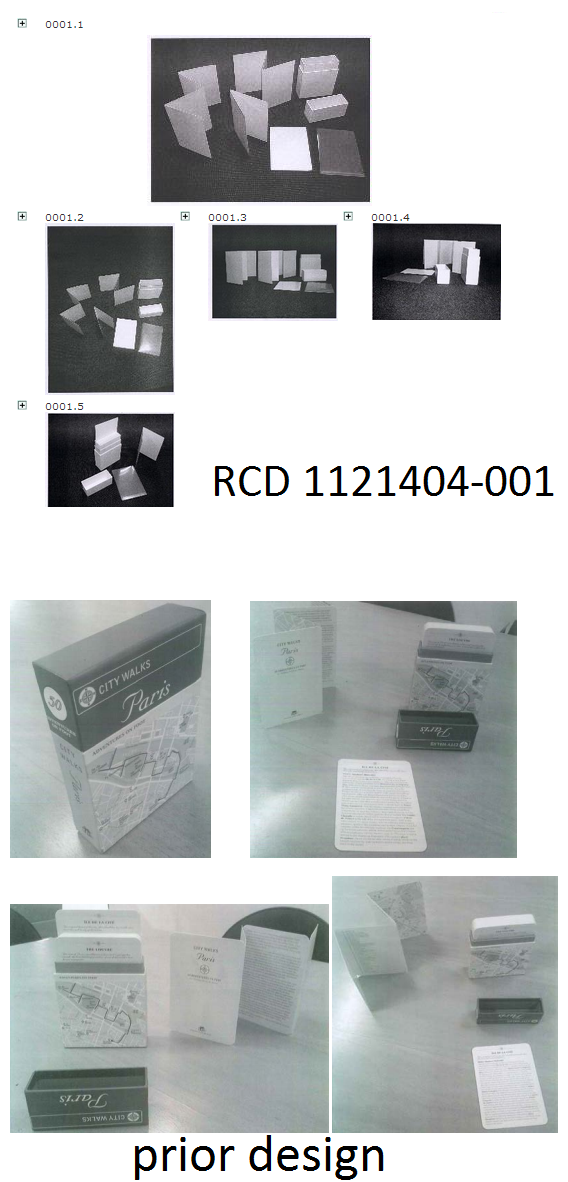OHIM: Salesman is geen geïnformeerde gebruiker
OHIM Board of Appeal 12 september 2012, R 172/2011-3 (The Automobile Association Ltd tegen Duncan Petersen Publishing Ltd) (folders) Modellenrecht. Bewijs door houder van modellenrecht. Salesman is geen geïnformeerde gebruiker. Wandelgids is een specius van folders. Duncan Petersen Publishing is de houder van het Gemeenschapsmodellenrecht No 1121404-001 voor ‘folders'. Bewijs: er is een witness statement ingediend van een salesmen, maar hij is geen geïnformeerde gebruiker (r.o. 30). De aangedragen prior design is een doos met combinatie van kaarten, waarvan een deel overeenstemd, maar er zijn verschillen. Het Gemeenschapsmerk bevat een één- en tweevoudig gevouwen kaart en een doorzichtig mapje en de prior design bevat meerdere eenvoudige kaarten (r.o. 34-35).
Modellenrecht. Bewijs door houder van modellenrecht. Salesman is geen geïnformeerde gebruiker. Wandelgids is een specius van folders. Duncan Petersen Publishing is de houder van het Gemeenschapsmodellenrecht No 1121404-001 voor ‘folders'. Bewijs: er is een witness statement ingediend van een salesmen, maar hij is geen geïnformeerde gebruiker (r.o. 30). De aangedragen prior design is een doos met combinatie van kaarten, waarvan een deel overeenstemd, maar er zijn verschillen. Het Gemeenschapsmerk bevat een één- en tweevoudig gevouwen kaart en een doorzichtig mapje en de prior design bevat meerdere eenvoudige kaarten (r.o. 34-35).
Het doorzichtige mapje dat kaarten gemakkelijk mee laat nemen en deze beschermd vallen door hun afwezigheid bij de prior design op en zullen niet over het hoofd gezien worden door de geïnformeerde gebruiker (36).
30 It follows that the ‘witness statements’ submitted by the design holder can have no bearing on the assessment of the overall impression produced on the informed user. Apart from the fact that Peter Clark as a salesman does not qualify as an informed user (see para. 25), the statements refer to walking guides only and hence to a category of products much narrower than that to which the contested RCD may be applied to.
34 The contested RCD and the prior design show a box with a combination of cards and have the following features in common: − A rectangular box; − A rectangular lid to fit the box; − A single card; − A three-fold card.
35 The differences consist in the following features: − The RCD contains a one-fold card, a two-fold card and a transparent sleeve; − The prior design contains numerous single cards.
36 In the overall impression the differences in the one-fold card, the two-fold card and the transparent sleeve are noticeable and will attract the informed user’s attention. They are features that are absent from the prior design and will not be overlooked by the informed user. A transparent sleeve to protect the cards makes their transport convenient and protects them from deterioration. Moreover, the contested decision rightly held that the difference between information printed on several cards or printed on a single, a one-fold or a two-fold card will not go unnoticed because it means dealing with one card instead of several.























































































